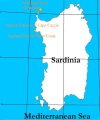The metabolic profile of Asinara (albino) and Sardo donkeys (pigmented) (Equus asinus L., 1758) points to unequivocal breed assignment of individuals
- PMID: 32714654
- PMCID: PMC7353909
- DOI: 10.7717/peerj.9297
The metabolic profile of Asinara (albino) and Sardo donkeys (pigmented) (Equus asinus L., 1758) points to unequivocal breed assignment of individuals
Abstract
This study pointed to explore if variations in circulating levels of metabolites in the blood stream of no. 25 feral donkeys occur in view of the different coat color between specimens of Asinara (albino, no. 8) vs. Sardo (dun-grey, no. 17) breed. All individuals involved in this investigation are living in the nature, at Mediterranean latitudes and roam in the same areas all over the National Park of Capo Caccia, where they feed on spontaneous vegetation sources. The study was conducted during the positive photoperiod of the boreal hemisphere (peak in the month of June, 2019) to maximize the effect of exposure to the natural sun radiation and thus elicit the coping ability of albino (Asinara) in comparison with pigmented donkeys (Sardo). The biochemical profile of all donkeys was used in a Discriminant Analysis (DA) to explore if circulating levels of metabolites could point to metabolic markers for breed assignment of individuals following a canonical discriminant analysis (CANDISC). The biochemical investigation included also the determination of the circulating Vitamin E (alpha tocopherol, α-TOH), as an essential biologically active compound involved in antioxidant mechanisms, and its respective status (circulating α-TOH to total triglycerides and total cholesterol ratio). In the CANDISC, the distance between the two breeds was not significant. However, it pointed to different metabolites (UREA, total protein, total triglycerides, Zn) capable of describing biochemical patterns on each respective breed (Asinara vs. Sardo). The multivariate analysis DA carried out using 22 metabolites correctly assigned individuals to the two breeds in the 100% of cases. In view of such metabolic background, circulating α-TOH found in the bloodstream of Asinara vs. Sardo donkeys under free grazing conditions turned out to reach similar values (2.114 vs. 1.872 µg/ml, respectively, p = 0.676). It is worth noting that significant differences were observed as to circulating lactate dehydrogenase (LDH, p = 0.022) levels, in association with increased creatine phosphokinase (CPK, p = 0.076), both above the upper limit of the physiological range reported in other donkey breeds, and found in the totality of Asinara (albino) donkeys solely, still apparently clinically healthy.
Keywords: Albinism; Mediterranean maquis; Sun radiation; Vitamin E.
© 2020 Cappai et al.
Conflict of interest statement
The authors declare that they have no competing interests.
Figures



References
-
- Association of Italian Breeders (Associazione Italiana Allevatori, AIA) Association of Italian Breeders. 2016. http://www.anagrafeequidi.it/menu.php http://www.anagrafeequidi.it/menu.php
-
- Bana B, Endebu B, Jenberie S, Negussie H. Determination of reference physiological values for working donkeys of Ethiopia. Veterinary Research. 2011;4(3):90–94.
-
- Biesalski H, Greiff HK, Brodda G, Hafner K, Bässler H. Rapid determination of vitamin A (retinol) and vitamin E (alpha-tocopherol) in human serum by isocratic adsorption HPLC. International Journal for Vitamin and Nutrition Research. 1986;56(4):319–327. - PubMed
LinkOut - more resources
Full Text Sources

